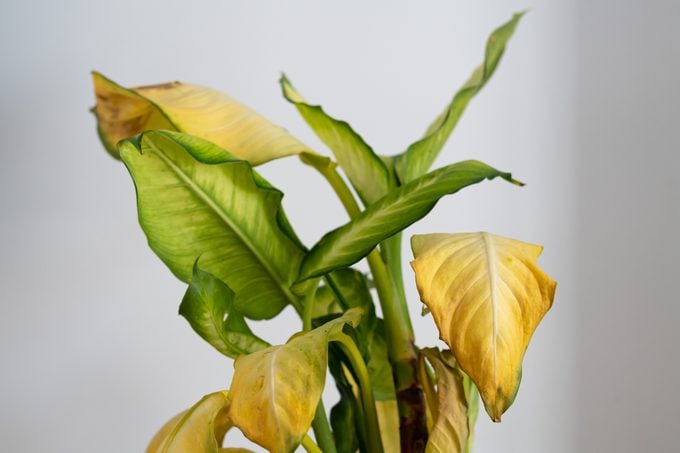Why Are My Plant Leaves Yellow?
Updated: Mar. 25, 2024
Are you seeing yellow leaves on plants? Learn the proper way to water and fertilize your indoor plants to prevent yellow leaves.

Yellow Leaves on Plants
Start by evaluating your regular watering habits. Watering too frequently or infrequently can cause leaves to yellow. Tropical plants prefer moist soil, while cacti and succulents like the soil to go dry between watering. Always use your finger to check the top 1 or 2 inches of soil for moisture before watering.
Increase success by using containers with drainage holes or self-watering pots with weep holes that allow excess water to escape. Pour off any water that collects in the saucer to avoid root rot, or place pebbles in the saucer to elevate the pot above the excess water.
Mites, aphids and scale pests suck plant juices, causing the leaves to yellow and turn brown. A strong blast of water dislodges many of the insects. A couple of applications of insecticidal soap will also manage these pests and immature scale insects. Organic horticulture oil labeled for use on houseplants is effective at controlling pests at all stages.
Check out the top 10 best houseplants for low light.
How to Fertilize Indoor Plants
Once you rule out improper watering, it’s time to review your fertilization schedule. Let the plants be your guide. Pale, stunted or yellow leaves may mean the plants need a nutrient boost. Use a diluted solution of houseplant fertilizer and only fertilize actively growing plants from spring through early fall, even if they’re always indoors.
Next, learn how to prevent brown tips on the leaves and brown spots on the leaves.




















